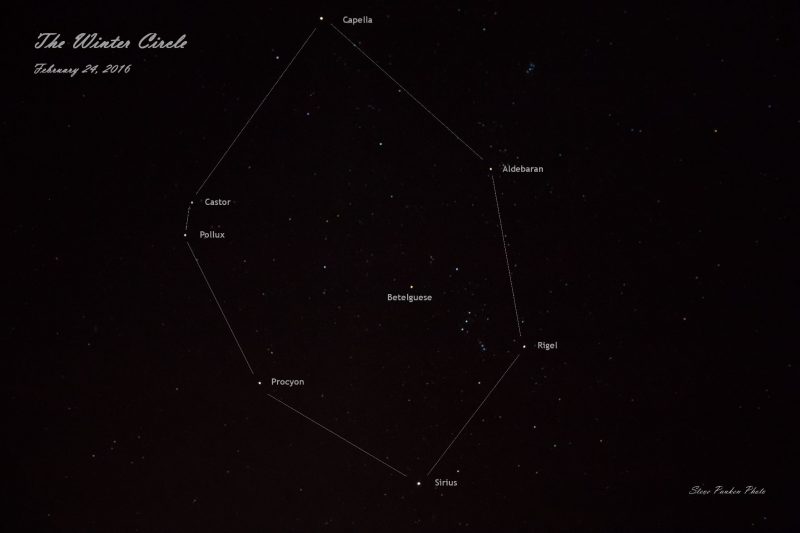First quarter moon was February 19, 2021. On February 20, 21 and 22, you’ll find the waxing gibbous moon shining inside a large asterism that we in the Northern Hemisphere call the Winter Circle (or Winter Hexagon). It’s a very large star pattern made of six brilliant stars. Around the world on these nights, the moon shines inside the Circle. The pattern is more or less south to overhead in early evening (or north to overhead as viewed from the Southern Hemisphere). It’ll drift westward throughout the night and into your western sky by midnight. Note that our chart is set for Northern Hemisphere viewers. From the Southern Hemisphere, the same stars appear near the moon, but the Circle is upside down with respect to our chart, with the star Sirius near the top.
Try Stellarium Online for your precise view from your location.
The Winter Circle isn’t one of the 88 recognized constellations. It’s an asterism, a pattern of stars that’s fairly easy to recognize. Our sky chart can’t adequately convey the Winter Circle’s humongous size! It dwarfs the constellation Orion the Hunter, which is a rather large constellation, occupying the southwestern part of the Winter Circle pattern.

Here’s how to locate the Winter Circle from mid-northern latitudes. At nightfall and early evening, look high overhead for the bright star Capella. This star marks the top (or more properly, the northern terminus) of the Winter Circle.
As Capella shines way overhead, the constellation Orion the Hunter is prowling in the southern sky. Draw a line downward through Orion’s Belt to find Sirius, the brightest star in the night sky. This star marks the bottom (the southern tip) of the Winter Circle, as seen from our Northern Hemisphere perspective.
By the way, during these next few nights, the waxing gibbous moon shows you where the sun resides in front of the backdrop stars in June. So enjoy the Winter Circle. And contemplate the sun being in this part of the sky when summer returns to the Northern Hemisphere!

Bottom line: On the evenings of February 20, 21 and 22, 2021, the waxing moon shines inside the huge pattern of stars known as the Winter Circle. Be sure to notice the different colors of these stars!
More on the Winter Circle: Brightest winter stars
Enjoying EarthSky so far? Sign up for our free daily newsletter today!











